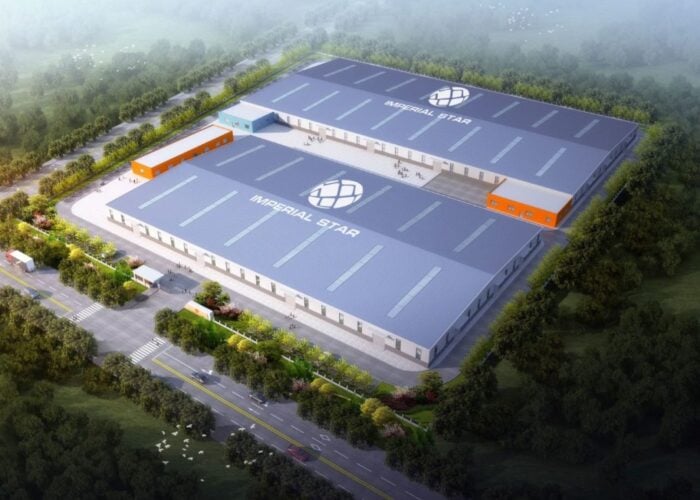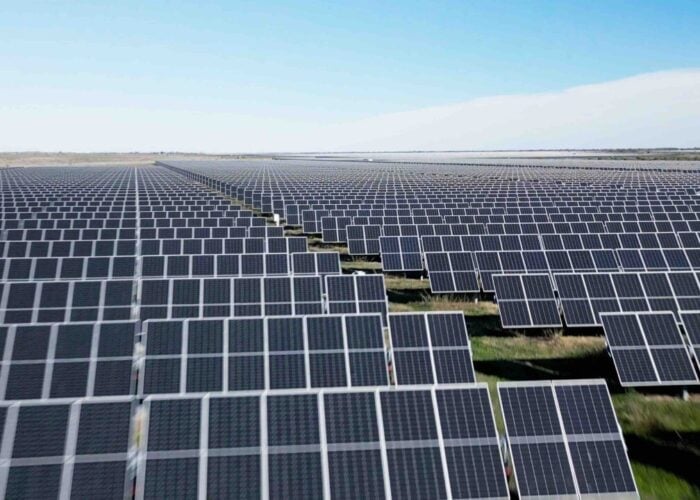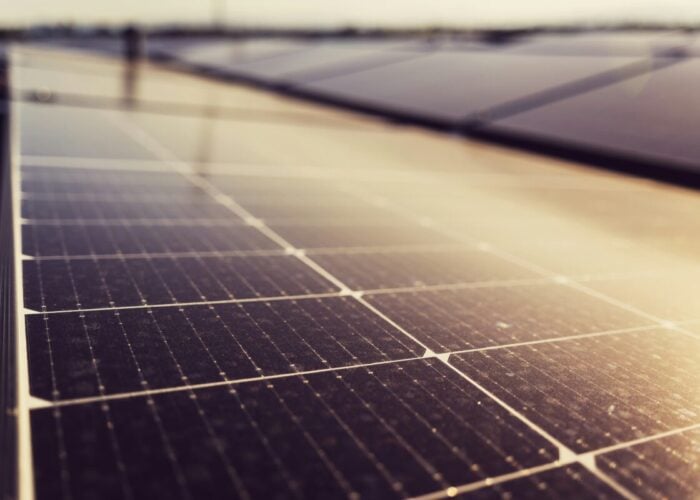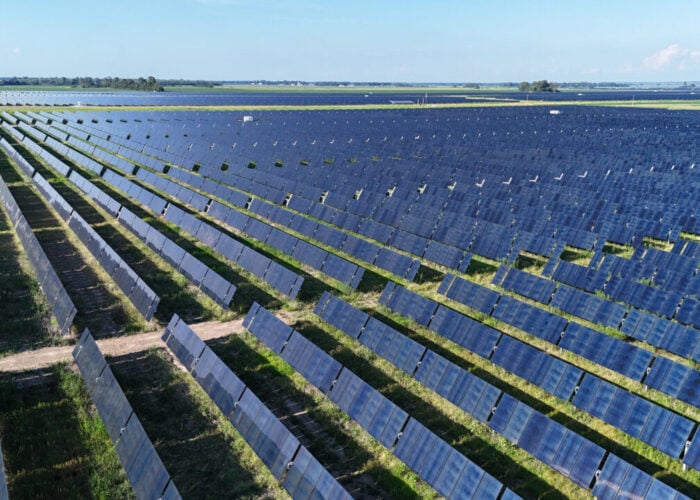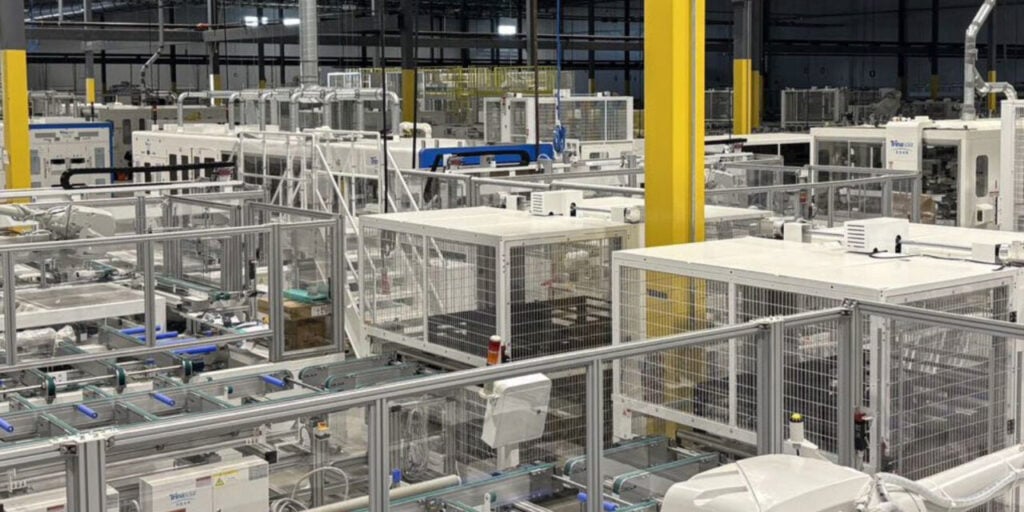
Solar manufacturer T1 Energy has revised down its guidance for 2025 due to near-term trade policy uncertainties.
For the full-year 2025 earnings before interest, taxes, depreciation, and amortisation (EBITDA) guidance, the company forecasts it will be between US$25-50 million, a decrease from the US$75-125 million previously forecasted.
Try Premium for just $1
- Full premium access for the first month at only $1
- Converts to an annual rate after 30 days unless cancelled
- Cancel anytime during the trial period
Premium Benefits
- Expert industry analysis and interviews
- Digital access to PV Tech Power journal
- Exclusive event discounts
Or get the full Premium subscription right away
Or continue reading this article for free
According to the company, these near-term trade policy uncertainties are “obscuring Bill of Materials cost visibility and creating a temporary lull in bidding activity”.
Moreover, it has also reduced its production forecast from 3.4GW to 2.6-3GW in 2025, despite an annual nameplate production capacity of 5GW once its first factory is fully operational. The company’s guidance reduction also reflects the change of technology from passivated emitter rear contact (PERC) to tunnel oxide passivated contact (TOPCon) in three production lines with a US$500,000 investment and a potential 800MW inventory build.
The module assembly plant – dubbed G1 Dallas – in Dallas, Texas, which was acquired last year from Chinese solar manufacturer TrinaSolar, continues to ramp up production and sales, of which it recently signed a 253MW supply agreement with an undisclosed US utility-scale developer. This sales agreement brings the company’s total modules sold in 2025 to 1.75GW.
The module assembly plant has produced 690MW, as of 11 May 2025, according to the company, while module shipments to the US arm of German utility RWE began during the second quarter.
Daniel Barcelo, T1’s CEO and chairman of the Board, said: “Although potential changes to trade policy are creating near-term uncertainties in the merchant sales market for T1 and our developer customers, we are well positioned to manage this sales environment with 1.7 GW of 2025 contracted module offtake coverage, a robust cash and liquidity position, and the continued production and sales ramp up at G1 Dallas.”
Regarding last week’s US House Ways and Means Committee’s Reconciliation Bill, T1 said that certain elements of the bill potentially “undermine growth, competition, and job creation in the US solar industry”, while adding that the preservation of 45X advanced manufacturing production tax credits (PTCs) “demonstrates support for US solar manufacturing”.
Revenues generated from the module assembly plant during the first quarter of 2025 were US$64.6 million, with sales exclusively tied to offtake agreements under TrinaSolar. In Q1 2025, the company decreased its net loss on a yearly basis from US$28.7 million to US$16.2 million.
T1 Energy started out as Freyr Battery, a Norway-headquartered startup focused on lithium-ion (Li-ion) battery production, aiming to make products in Europe and the US, before pivoting into the solar PV space, completing its official rebranding under the new name in February.
Potential Saudi investment for solar cell plant
A few months after T1 unveiled the location for the construction of its solar cell plant – dubbed G2 Austin – which will also be located in Texas, more specifically Milam County in Austin, the company entered into a non-bidding agreement with an undisclosed Saudi company – aligned with the Kingdom of Saudi Arabia – to pursue an investment in T1’s solar cell processing plant.
Other than the Saudi agreement, the company initiated several other capital formation initiatives to secure funding for the solar cell plant.
“[T1] is currently advancing a project financing with its consortium of commercial lenders, the monetisation of Section 45X PTCs, and possible mezzanine financing options to complement expected customer offtake deposits to reserve G2 capacity,” said the company.
The monetisation of Section 45X PTCs are expected to begin in Q2/Q3 2025, according to the company.
The timeline for the construction of the Austin solar cell plant still remains unchanged, according to the company with a forecast to begin production by Q4 2026. Construction will be carried out in two phases with each phase adding 4 lines and an annual nameplate capacity of 4.8-5.1GW once fully operational.
Furthermore, T1 said it remains committed to establishing a domestic content supply chain, which will also rely on the supply of polysilicon from Hemlock Semiconductor.

